Secciones
Servicios
Destacamos
Secciones
Servicios
Destacamos
“We have gone from getting one alert every two months to up to five warnings per month,” explained Lieutenant Colonel Óscar Remacha, responsible for the drug trafficking unit in the Unidad Central Operativa (Central Operative Unit, a specialised division of the Civil Guard). This officer led ‘operation Nautilus’, carried out in March, which saw the capture of the highest quantity of drugs ever found on these ships: over six tonnes of Colombian cocaine. Now their focus has turned to the route filling Europe with this white powder which travels at sea level among the breaking waves, making it almost invisible to the radar. This illegal activity is now going global, with a new case found in the Pacific Ocean, moving fortunes unsuspected.

Part above the surface
Part below the surface

Part above the surface
Part below the surface

Part above the surface
Part below the surface

Part above the surface
Part below the surface
Although these ships have been labelled narco-submarines, the more appropriate term is semi-submersibles because they don’t travel under the water, but cruise invisibly along on the surface, making them almost unidentifiable for technical equipment or the human eye. The technology of these ships is becoming increasingly sophisticated. In ‘operation Nautilus’, a ship was found 600 miles from the Azores islands, in the middle of the Atlantic. “It brought to our attention that onboard, there are half a dozen GPS and other satellite-operated devices. Until now, the semi-submersibles left South America and remained on course until arriving at their delivery location. The technology they have now adopted allows them to change route and mark sites offshore so that speed boats can collect the drugs,” explained the Lieutenant Colonel. This is a defining feature of the new wave of narco-submarines: they are continually updated with more sophisticated software to support weeks of navigation through the Atlantic, without disorientation.

Engine room
Crew: 2-4
Load
Fuel
Marine diesel engine
Capacity: 2-10 tonnes
Hull of the ship: wood, fiberglass or steel
Speed: 10-15 km/h
Outboard motors are frequently used
Most of the space below sea level is used for fuel reserves; in some cases one or more stops are necessary to refuel mid-journey.
Operation ‘Orión’
The ship intercepted in the Azores on the way to the Andalusian coast even had a handrail on the stern so that the marines could be on deck during the journey.
Camouflage colours
Blue for the hull in summer through the sunnier Pacific
Light grey for the hull in the Pacific
The Atlantic is cloudier, so the colours are greyish
The deck is painted in a darker colour than the hull

Engine room
Crew: 2-4
Load
Fuel
Marine diesel engine
Capacity: 2-10 tonnes
Hull of the ship: wood, fiberglass or steel
Speed: 10-15 km/h
Outboard motors are frequently used
Most of the space below sea level is used for fuel reserves; in some cases one or more stops are necessary to refuel mid-journey.
Operation ‘Orión’
The ship intercepted in the Azores on the way to the Andalusian coast even had a handrail on the stern so that the marines could be on deck during the journey.
Camouflage colours
Blue for the hull in summer through the sunnier Pacific
Light grey for the hull in the Pacific
The Atlantic is cloudier, so the colours are greyish
The deck is painted in a darker colour than the hull
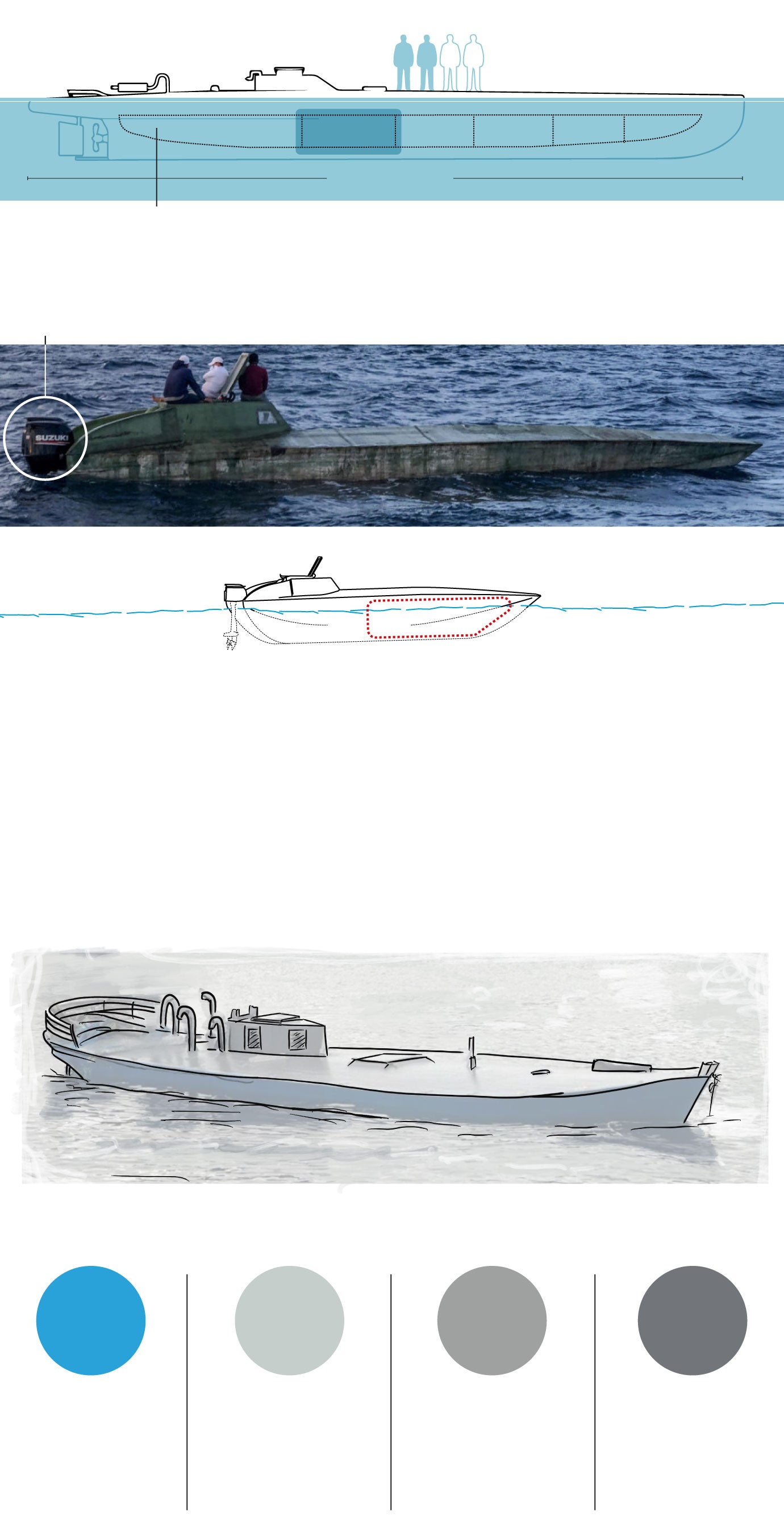
Kink in the exhaust to stop water from coming in
Crew: 2-4
Hull of the ship: wood, fiberglass or steel
Engine room
Fuel
Load
Length: 12-24 m
Marine diesel engine
Capacity: 2-10 tonnes
Speed: 10-15 km/h
Outboard motors are frequently used
Most of the space below sea level is used for fuel reserves; in some cases one or more stops are necessary to refuel mid-journey.
Operation ‘Orión’
The ship intercepted in the Azores on the way to the Andalusian coast even had a handrail on the stern so that the marines could be on deck during the journey.
Camouflage colours
Blue for the hull in summer through the sunnier Pacific
Light grey for the hull in the Pacific
The Atlantic is cloudier, so the colours are greyish
The deck is painted in a darker colour than the hull

Kink in the exhaust to stop water from coming in
Crew: 2-4
Hull of the ship: wood, fiberglass or steel
Engine room
Fuel
Load
Length: 12-24 m
Capacity: 2-10 tonnes
Speed: 10-15 km/h
Marine diesel motor: 350-400 hp
Outboard motors, easiest to install, are used most frequently
Most of the space below sea level is used for fuel reserves; in some cases one or more stops are necessary to refuel mid-journey.
Operation ‘Orión’
The ship intercepted in the Azores on the way to the Andalusian coast even had a handrail on the stern so that the marines could be on deck during the journey.
Camouflage colours
Blue for the hull in summer through the sunnier Pacific
Light grey for the hull in the Pacific
The Atlantic is cloudier, so the colours are greyish
The deck is painted in a darker colour than the hull
One of the greatest successes of ‘operation Nautilus’ was ambushing a submarine before the traffickers had time to submerge it. The drug traffickers usually jump into the water when security boats approach and send the semi-submersible under the surface so that the drugs disappear and they can’t be accused of trafficking illegal substances. “In this case, the interception was carried out by the Portuguese navy. For operative reasons, they can’t disclose how they did it, so as to not affect future operations,” explained Remacha. The Portuguese intervention was carried out at the request of the Spanish Guardia Civil, whose investigations had led to knowledge of the submarine’s route and even evidence from satellite photography. “It was intercepted at high sea specifically so that speed boats could not come to collect the cocaine,” said the official.
Five people were travelling in the semi-submersible. Three of them were Brazilian citizens whose role was navigation. Among the other two, one was Spanish. The cargo was to be transported, with the help of secondary ships, through Guadalquivir, the route that current drug traffickers use to get to Spain. “It’s normal for submarine crews to have marines whose sole task is to navigate the semi-submersible, as well as other members who ensure the operation is under control,” said Remacha. Crew members can receive up to 30,000 euros for risking the Atlantic crossing in this type of vessel.
Among the many secrets of how these operations take place, one of them is how many narco-submarines have disappeared in the Atlantic - due to shipwreck or other accidents. “They won’t ask for help even if they have a problem. There are probably families who don’t imagine that their disappeared next of kin is at the bottom of the sea,” explained the official.
The threat that narco-submarines pose to security forces is their efficiency “and their very high success rates”. In comparison to the fishing boats that were historically used by Galicians to transport drugs: containers of narcotics camouflaged in big cargo ships or homemade torpedoes towed by legal boats - these semi-submersibles have shown that they can use the same classic routes, but with a higher probability of achieving their goals.

Semi-submersible
Handmade semi-submersible ‘Aldán’
Cross section of a narco-submarine, sunk on the Galician coast to hide from the police
3 tonnes of cargo
20,000 litres of fuel
20 m
Currently on display in the Police Academy (in Avila)
Journey conditions
Double-glazed windows
Fiberglass hull (7 cm thick)
Engine speed
Steering wheel
It was very hot inside when the engine was on. There were only a few ventilation tubes. They ate energy bars and tins of sardines. They defecated in plastic bags..
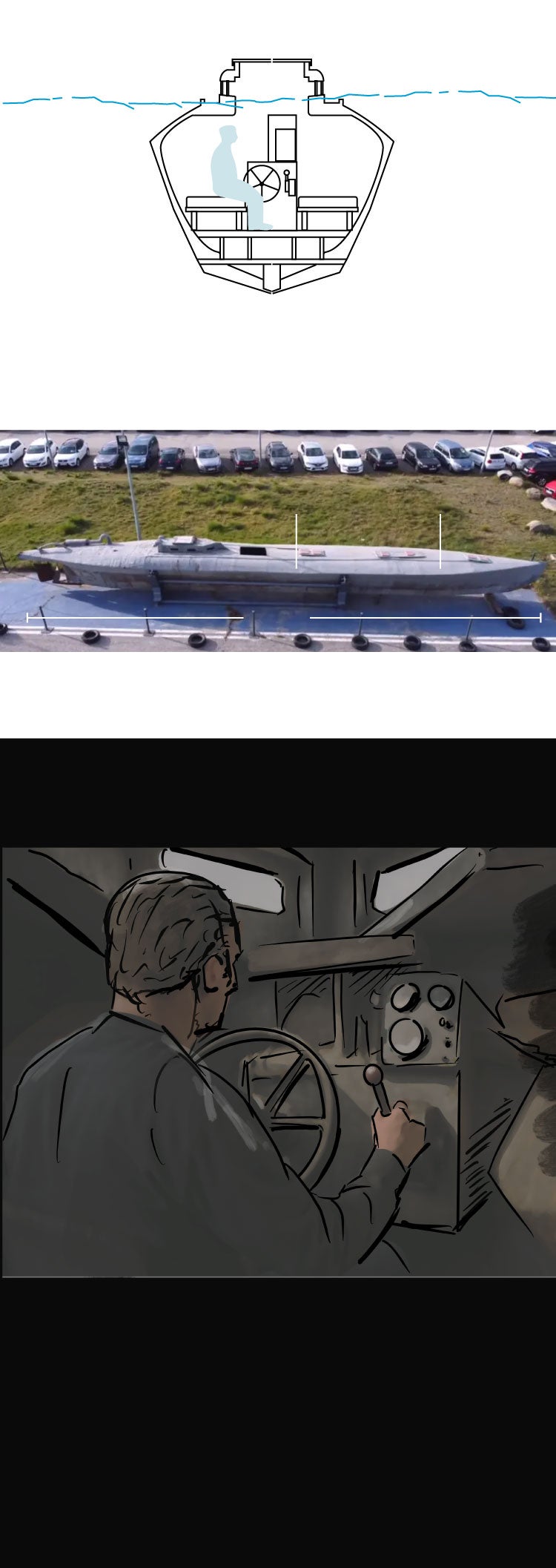
Handmade semi-submersible ‘Aldán’
Cross section of a narco-submarine, sunk on the Galician coast to hide from the police
3 tonnes of cargo
20,000 litres of fuel
20 m
Currently on display in the Police Academy (in Avila)
Journey conditions
Double-glazed windows
Fiberglass hull (7 cm thick)
Engine speed
Steering wheel
Cargo compartment
It was very hot inside when the engine was on. There were only a few ventilation tubes. They ate energy bars and tins of sardines. They defecated in plastic bags.
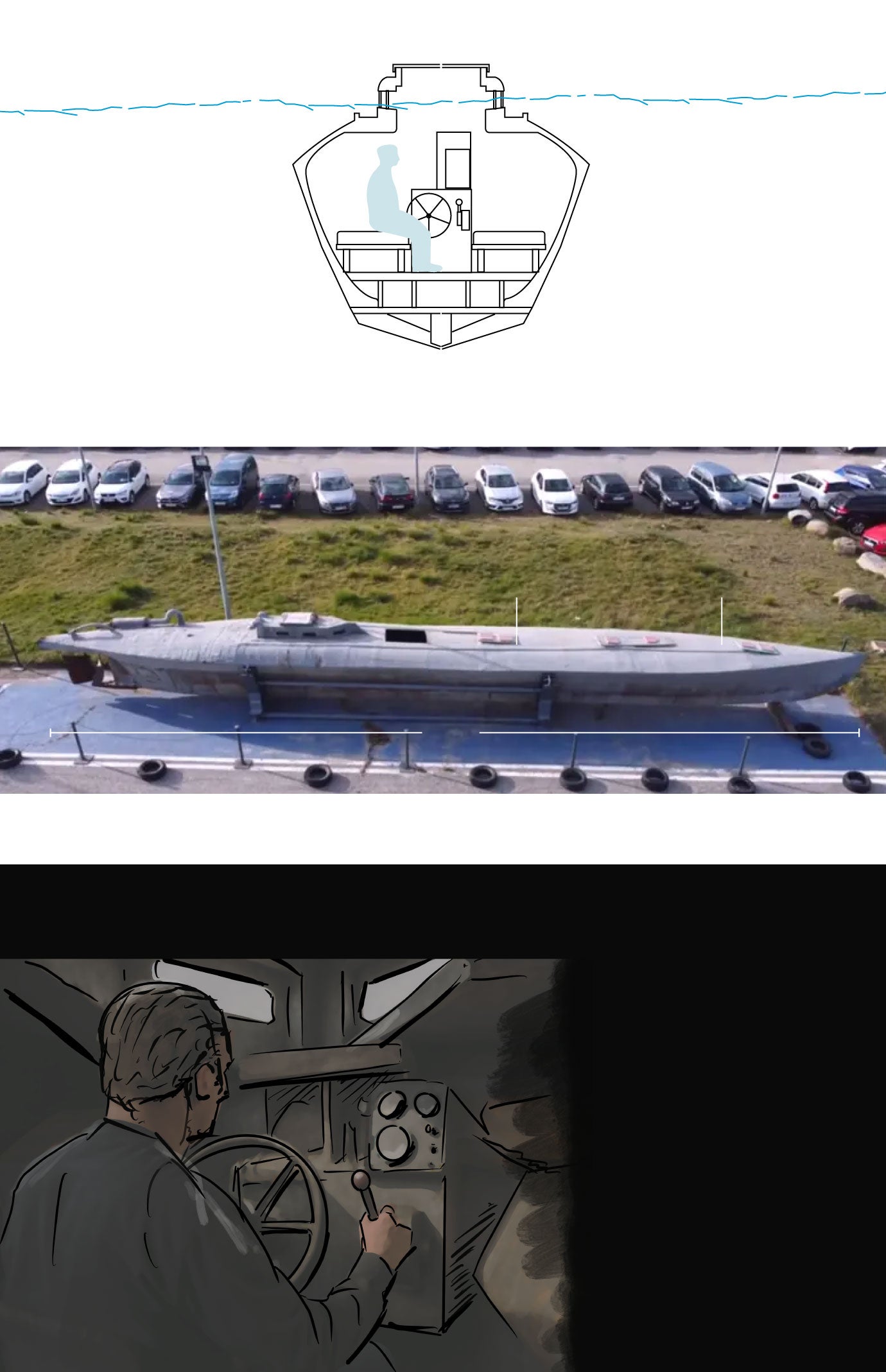
Handmade semi-submersible ‘Aldán’
Cross section of a narco-submarine, sunk on the Galician coast to hide from the police
3 tonnes of cargo
20,000 litres of fuel
20 m
Currently on display in the Police Academy (in Avila)
Journey conditions
It was very hot inside when the engine was on. There were only a few ventilation tubes. They ate energy bars and tins of sardines. They defecated in plastic bags.
Double-glazed windows
Fiberglass hull (7 cm thick)
Engine speed
Steering wheel
Cargo compartment
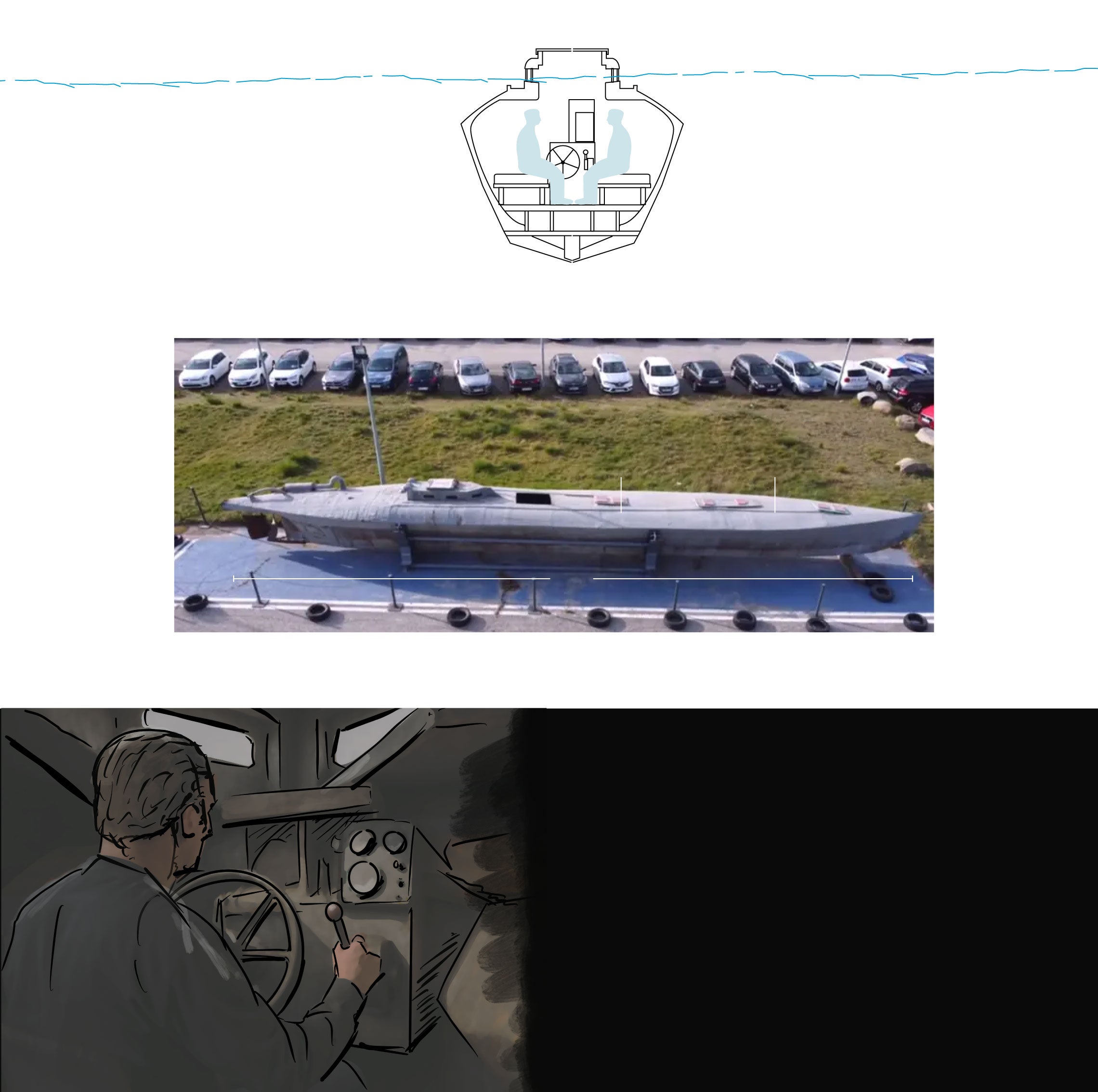
Handmade semi-submersible ‘Aldán’
Cross section of a narco-submarine, sunk on the Galician coast to hide from the police
3 tonnes of cargo
20,000 litres of fuel
20 m
Currently on display in the Police Academy (in Avila)
Double-glazed windows
Journey conditions
It was very hot inside when the engine was on. There were only a few ventilation tubes. They ate energy bars and tins of sardines. They defecated in plastic bags.
Fiberglass hull (7 cm thick)
Engine speed
Steering wheel
Cargo compartment
The first narco-submarine was found in Spain in 2019 in the Aldán estuary, in Pontevedra, Galicia. Since then, another four of these ships have been found. The former Galician drug capo, Laureano Oubiña, stated in a suspect memoir that these devices have been used at least since the turn of the century. The drug trafficker added that between the Canary and Azores islands, there is a narco-submarine graveyard since these waters were a transfer site of cocaine from the semi-submersibles to other ships. Once they have completed their mission, the traffickers sink the ships that left South America, so they don’t leave a trace.
But the route to Spain isn’t the only one where these types of ships are being found. In January this year, they found a narco-submarine in Sierra Leone, in West Africa. The ship was empty, meaning the drugs had already been delivered. This case is linked with Dutch citizen Johannes Leijdekkers, known as ‘El gordo Joos’. This trafficker was seen in Sierra Leone and is supposedly linked to their current president. He is considered one of the biggest traffickers in the EU and worldwide. A 200,000 euro reward will be granted for any clue that leads to his arrest.

Spain
United States
Madeira
Canary Islands
NORTH ATLANTIC
Venezuela
Sierra Leone
Colombia
Guyana
SOUTH ATLANTIC
Brazil
The Atlantic crossing is as short as possible, a journey that lasts around three weeks. The submersibles that turn up onshore have been abandoned after successfully delivering their goods to other ships.
Expansion to the Pacific Pacífico
Ecuador
SOUTH PACIFIC OCEAN
New Zealand
Antarctica
Travel to Australia is the longest possible route, but it’s still worthwhile because drugs can cost up to four times more than in Europe.
SOUTH PACIFIC OCEAN
New Zealand
Australia
Antarctica

Spain
United States
Madeira
Canary Islands
NORTH ATLANTIC
Venezuela
Sierra Leone
Colombia
Guyana
SOUTH ATLANTIC
Brazil
The Atlantic crossing is as short as possible, a journey that lasts around three weeks. The submersibles that turn up onshore have been abandoned after successfully delivering their goods to other ships.
Expansion to the Pacific
Travel to Australia is the longest possible route, but it’s still worthwhile because drugs can cost up to four times more than in Europe.
Ecuador
SOUTH PACIFIC OCEAN
New Zealand
Antarctica
SOUTH PACIFIC OCEAN
New Zealand
Australia
Antarctica
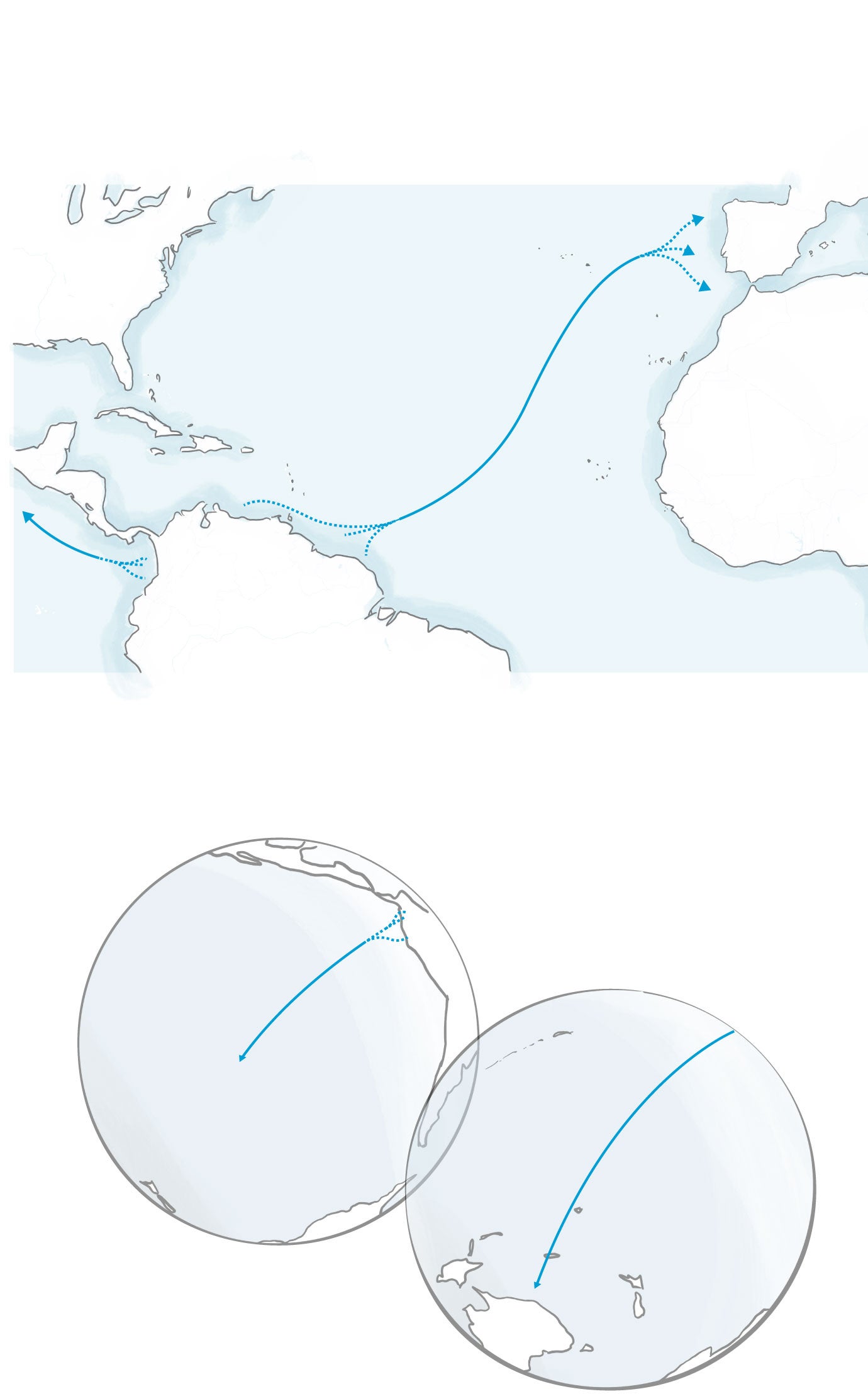
The Atlantic crossing is as short as possible, a journey that lasts around three weeks. The submersibles that turn up onshore have been abandoned after successfully delivering their goods to other ships.
Unloading in Galicia
Spain
Azores
Route to Europe: 20-25 days of travel
United States
Madeira
Canary Islands
NORTH ATLANTIC OCEAN
Cape Verde
Venezuela
Sierra Leone
Guyana
First discovery of a narco-submarine on African coasts
Brazil
Colombia
French Guiana
Route to US. By sea to the north of Mexico: 2 weeks of travel
SOUTH ATLANTIC OCEAN
Brazil
Expansion to the Pacific
Travel to Australia is the longest possible route, but it’s still worthwhile because drugs can cost up to four times more than in Europe.
Ecuador
SOUTH PACIFIC OCEAN
SOUTH PACIFIC OCEAN
New Zealand
Antarctica
New Zealand
Australia
Antarctica

Unloading in Galicia
Spain
The Atlantic crossing is as short as possible, a journey that lasts around three weeks. The submersibles that turn up onshore have been abandoned after successfully delivering their goods to other ships.
Azores
United States
Madeira
Canary Islands
NORTH ATLANTIC OCEAN
Cape Verde
United States
Route to Europe: 20-25 days of travel
Venezuela
Sierra Leone
Guyana
First discovery of a narco-submarine on African coasts
Suriname
Australia
Colombia
French Guiana
Route to US. By sea to the north of Mexico: 2 weeks of travel
SOUTH ATLANTIC OCEAN
Brazil
Expansion to the Pacific
Travel to Australia is the longest possible route, but it’s still worthwhile because drugs can cost up to four times more than in Europe.
Ecuador
SOUTH PACIFIC OCEAN
SOUTH PACIFIC OCEAN
New Zealand
New Zealand
Australia
Antarctica
Antarctica
The narco-submarine journey that was most surprising to security forces and deomnstrative of the versatility of these ships was detected in November last year. Colombian authorities found a semi-submersible that set sail from their coasts and was en route to Australia with five tonnes of cocaine in its hold. The ship had enough fuel in its reserves to carry out a journey of over 10,000 kilometres without refuelling. This Australian case reveals an astounding economic insight to these narco-submarines. In the US, a kilogram of the substance is sold at around 40,000 euros. But in Australia, because of its isolation and the difficulties of the journey, a kilogram of the narcotic can reach prices of 240,000 dollars. This information means that the narco-submarine was transporting 1.2 billion dollars worth of cocaine.

Slowness
They travel at low speeds: moving slowly makes less noise and raises less attention.
Types
Low profile semi-submersibles
Most common
Submarines
Almost undetectable, but more difficult to build
Torpedo transport
A ‘legal’ boat tows a submarine containing the cargo
Unloading
Usually it isn’t the narco-submarine that unloads the drugs, instead, close to the shore, they are transferred to another boat, which is then in charge of unloading the goods.
Fishing boats or speed boats unload the drugs

Slowness
They travel at low speeds: moving slowly makes less noise and raises less attention.
Types
Low profile semi-submersibles
Most common
Submarines
Almost undetectable, but more difficult to build
Torpedo transport
A ‘legal’ boat tows a submarine containing the cargo
Unloading
Usually it isn’t the narco-submarine that unloads the drugs, instead, close to the shore, they are transferred to another boat, which is then in charge of unloading the goods.
Fishing boats or speed boats unload the drugs
Narco-submarine
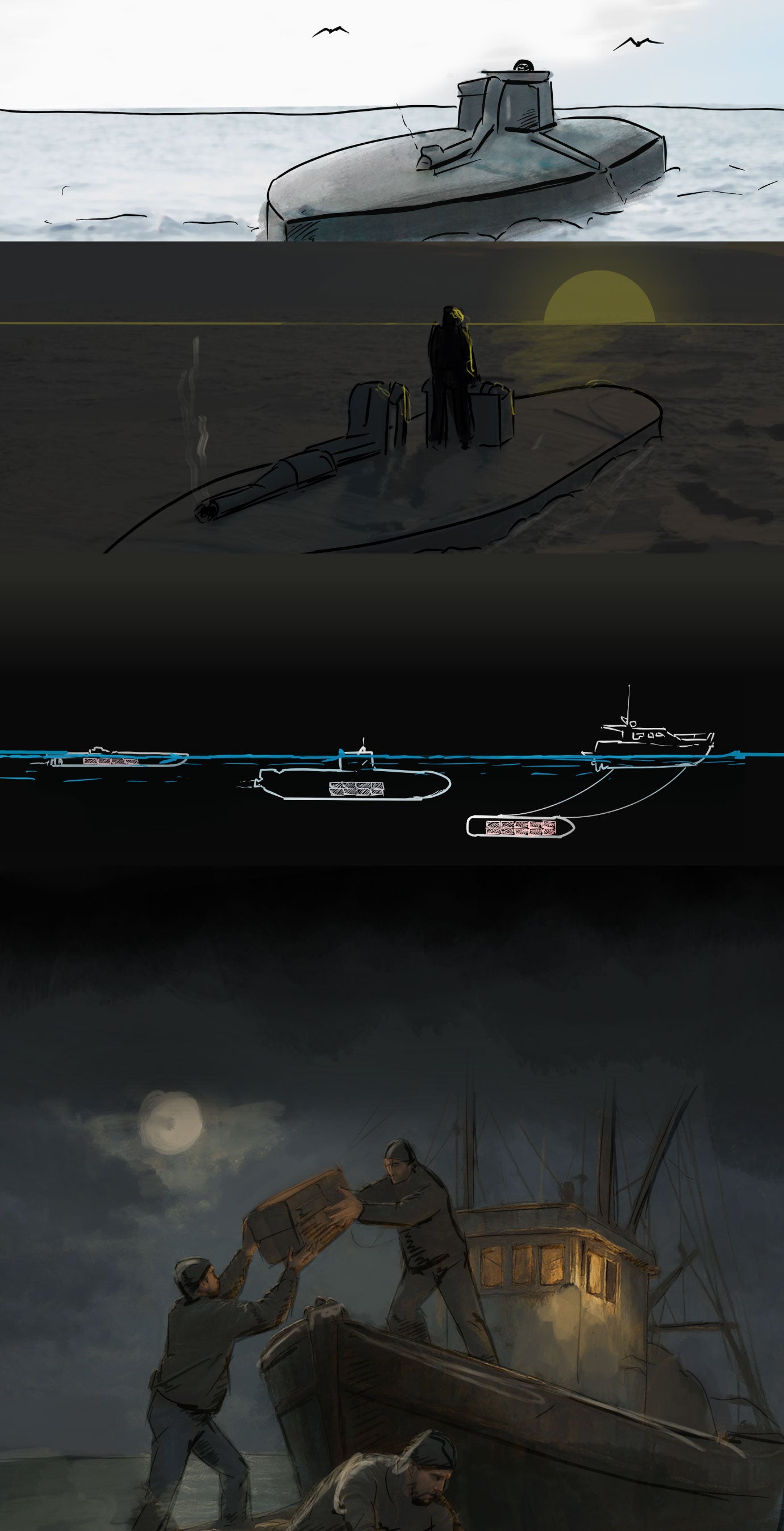
Slowness
They travel at low speeds: moving slowly makes less noise and raises less attention.
Types
Submarines
Torpedo transport
Low profile semi-submersibles
A ‘legal’ boat tows a submarine containing the cargo
Almost undetectable, but more difficult to build
Most common
Unloading
Usually it isn’t the narco-submarine that unloads the drugs, instead, close to the shore, they are transferred to another boat, which is then in charge of unloading the goods.
Narco-submarine
Fishing boats or speed boats unload the drugs

Slowness
They travel at low speeds: moving slowly makes less noise and raises less attention.
Types
Submarines
Torpedo transport
Low profile semi-submersibles
A ‘legal’ boat tows a submarine containing the cargo
Almost undetectable, but more difficult to build
Most common
Unloading
Usually it isn’t the narco-submarine that unloads the drugs, instead, close to the shore, they are transferred to another boat, which is then in charge of unloading the goods.
Fishing boats or speed boats unload the drugs
Narco-submarine
Submarine construction is not difficult. “Engineers work in the Amazon rainforest to build the semi-submersibles. Each unit can cost between half a million and a million dollars, and they still make them by hand,” said Lieutenant Colonel Remacha. The semi-submersibles are built on territories controlled by Colombian drug ring ELN and Primeiro Comando da Capital, the Brazilian cartel that has now expanded across South America. These improvised shipyards are key to the impunity with which the cartels act in sending their narco-submarines across the sea, but security forces have just started to locate the construction sites. “We are watching as their audacity grows,” said the officer of the Central Operative Unit.
¿Tienes una suscripción? Inicia sesión
Publicidad
Noticia Patrocinada
Publicidad
Paco Griñán | Málaga
Cristina Cándido y Álex Sánchez
Esta funcionalidad es exclusiva para registrados.
Reporta un error en esta noticia

Debido a un error no hemos podido dar de alta tu suscripción.
Por favor, ponte en contacto con Atención al Cliente.

¡Bienvenido a SURINENGLISH!

Tu suscripción con Google se ha realizado correctamente, pero ya tenías otra suscripción activa en SURINENGLISH.
Déjanos tus datos y nos pondremos en contacto contigo para analizar tu caso

¡Tu suscripción con Google se ha realizado correctamente!
La compra se ha asociado al siguiente email
Comentar es una ventaja exclusiva para registrados
¿Ya eres registrado?
Inicia sesiónNecesitas ser suscriptor para poder votar.